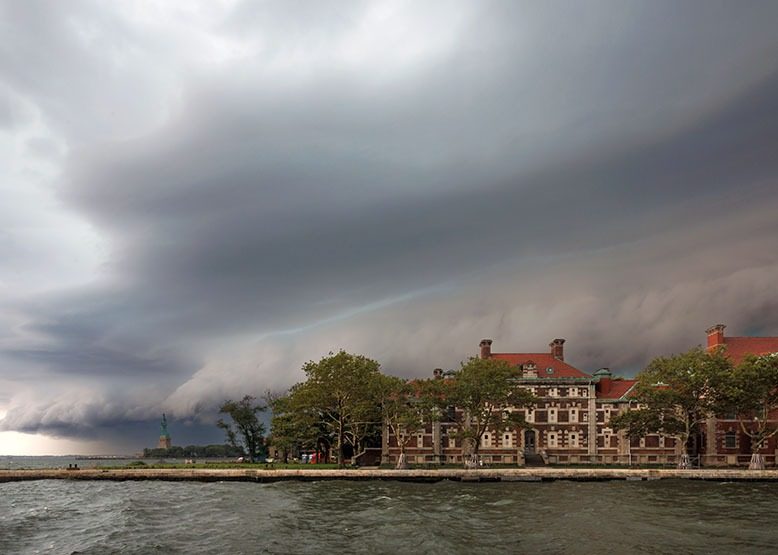
The Ellis Island hospital is only a few steps from the main immigration building, a magnificent brick-and-limestone structure bustling with tourists. Built by the same architect at the same time, the hospital building was once equally grand, a mirror image of its French Renaissance twin, which it faces across a small inlet. But today, 69 years after the last immigrant left the island, the main hospital building is dark and decrepit, a ghost of its former self, as are 28 other hospital structures. Abandoned to time and the salt air, roofs are leaking, windows broken, walls collapsing. The buildings, along with the stories of the 1.2 million immigrants who were treated there, are in danger of crumbling into the sea.
It’s hard to process the efficiency of the Ellis Island medical operation between 1892 and 1954, when more than 12 million immigrants arrived on the island. Between 5,000 and 10,000 were examined daily and many treated in the 750-bed hospital for chronic conditions and contagious diseases contracted aboard long ocean voyages on crowded ships.
The dining hall served 1,000 meals at a time, including kosher meals, and the dormitories slept close to that number each night. There was indoor plumbing, central heat and electricity. The first-rate medical care brought doctors from all over the country to study disease.
Yet these buildings, so central to the country’s history and countless personal histories, are in danger of slipping away. The National Park Service, responsible for maintaining the 27-acre island, has designated the hospital buildings “surplus,” meaning there is no money in the budget for their repair or maintenance. The task of saving the hospital complex has fallen to a New Jersey nonprofit formed in 1999, Save Ellis Island.
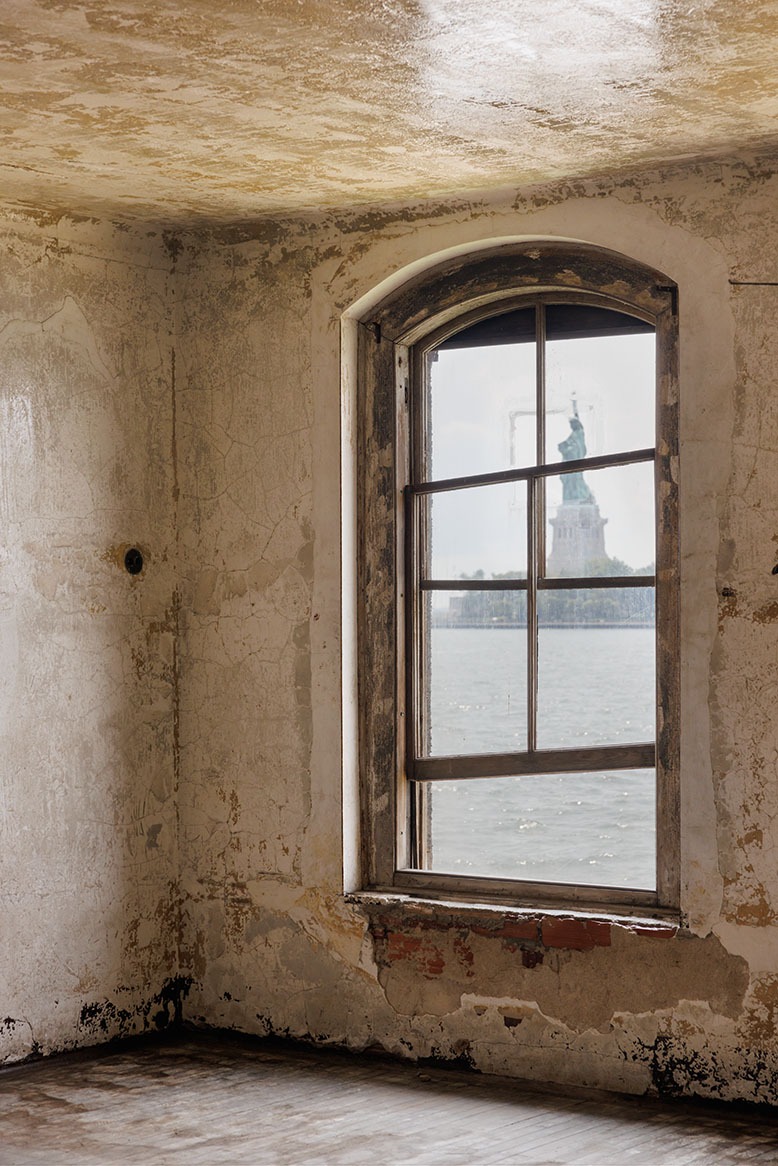
Through grimy, cracked windows, visitors can see the same inspiring view of the Statue of Liberty as Ellis Island’s new immigrants, many of whom arrived penniless, petrified, and unable to speak the language. Photo: Colin Miller
A DIFFERENT KIND OF MUSEUM
Despite the monumental nature of her task, Janis Calella, the president of Save Ellis Island, brims with enthusiasm for the place. “People forget about the south side of the island, but it has this incredible history,” she says. “It’s a museum, but a different kind of museum. These buildings tell the story of a melting pot of different cultures and ethnic backgrounds who traveled this tremendous distance because they thought the streets were paved with gold. We had to figure out how to make them eligible to come in and make them comfortable. It’s a crazy story and an incredible place to learn about people, culture and medicine.”
On the surface, the challenges and funding model of the hospital complex are little different than that of the building houseing the Great Hall, which was also abandoned and crumbling when renovation work, began in the 1980s. But the hospital center is much larger, comprising two-thirds of the island, and has been neglected for longer. And the Great Hall renovation was high-profile, led by Chrysler Corporation chairman Lee Iacocca with the backing of President Ronald Reagan, and the entire country got swept up in the cause.
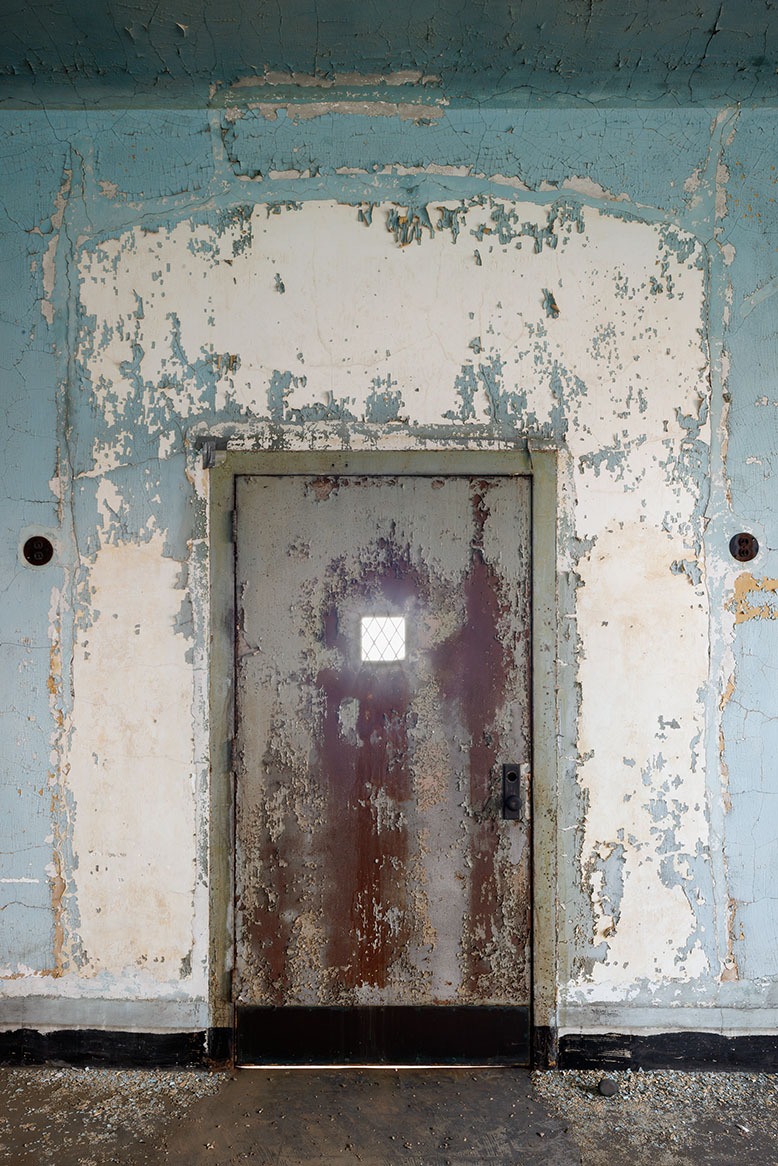
“The walls tell a story, and as you walk through, you hear whispers and your imagination goes wild,” Calella says. Photo: Colin Miller
The Great Hall building also has the distinction of being the only one on the island located in New York, while the hospital complex lies completely in New Jersey, a mere 1,300 feet from Jersey City’s Liberty State Park. Originally, Ellis Island consisted only of the land under the Great Hall building on the New York side of the Hudson. But it grew bigger as landfill was dumped on the Jersey side of the river from ship ballast and the excavation of the New York subways. In 1998, after more than a century of lawsuits between the two states, the U.S. Supreme Court ruled that the natural land on Ellis Island under the Great Hall building was New York’s, and the manmade south side, upon which the hospital complex was built, was New Jersey’s.
What Save Ellis Island lacks in star power and New York cachet, it makes up for in Jersey grit; the group has raised more than $70 million for the rehabilitation and restoration of the buildings on the south side. Its most pressing mission is stabilizing them to keep them from deteriorating past the point where they can be saved. Once a building is in “arrested decay,” Calella says, it’s safe and stable—its roofs watertight, walls shored up, peeling lead paint sealed over. Then, not only is it no longer in immediate danger of becoming a ruin, but it can generate revenue. For example, the second floor of the laundry building is completely renovated and rented as offices to the ferry company that brings tourists to Ellis Island; the first floor, in arrested decay, is on the Hard Hat tour of the hospital, whose receipts go to shore up yet more buildings.
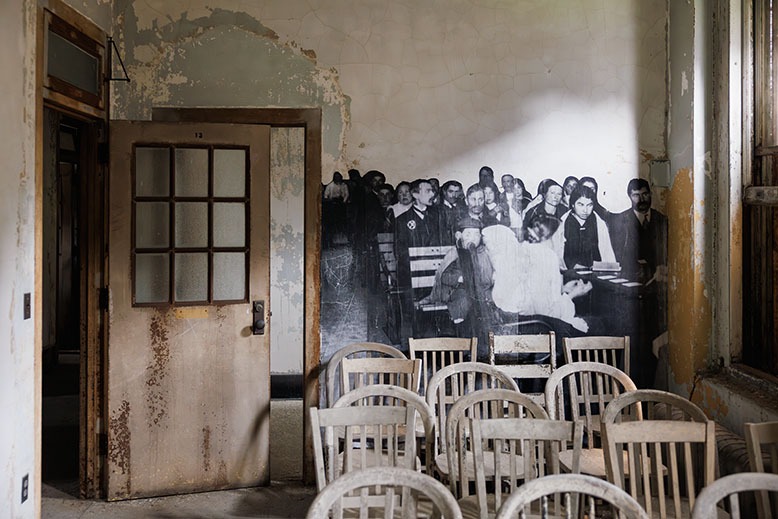
In an exhibit by French artist JR, the somber faces of bearded men in dark coats, women in long dresses and kerchiefs, and children with bandaged heads stare, ghostlike, from deep in the past. Photo: Colin Miller
The nonprofit has also fully renovated the ferry building, which houses Save Ellis Island’s offices, as well as the passageway from the Great Hall to the hospital, and it has removed the asbestos from all the buildings.
Next in line for rehabilitation is the contagious-diseases hospital, where a leaky roof is “decaying the building from the inside out,” Calella explains. On her long-term wish list is the recreation building, with its large stage and intact tile floor. Once restored, it could bring in more revenue as a special-events space. Another dream is the restoration of the “magnificent” doctors’ residence, she says.
In addition to funds from individuals, corporations and foundations, Save Ellis Island receives support from other nonprofits in the state. The NJ Historic Trust, for example, has given more than $1.4 million, contingent on Save Ellis Island matching that amount, to jumpstart the $2.5 million rehab of the contagious-diseases hospital.
Save Ellis Island also hosts school groups, kindergarten through college and beyond, for programs in preservation, immigration history, art, literature and science.
Hard Hat tours, begun in 2014, give visitors a fascinating peek into what was then a state-of-the-art medical operation: the contagion wards, where beds were placed under enormous windows open year-round to the sea air; the operating room, where tuberculosis patients were reportedly treated with an innovative lung-deflating procedure; the morgue, where visiting doctors came to learn about disease; the prison-like psychiatric ward, and a building for those then known as “the feebleminded.”
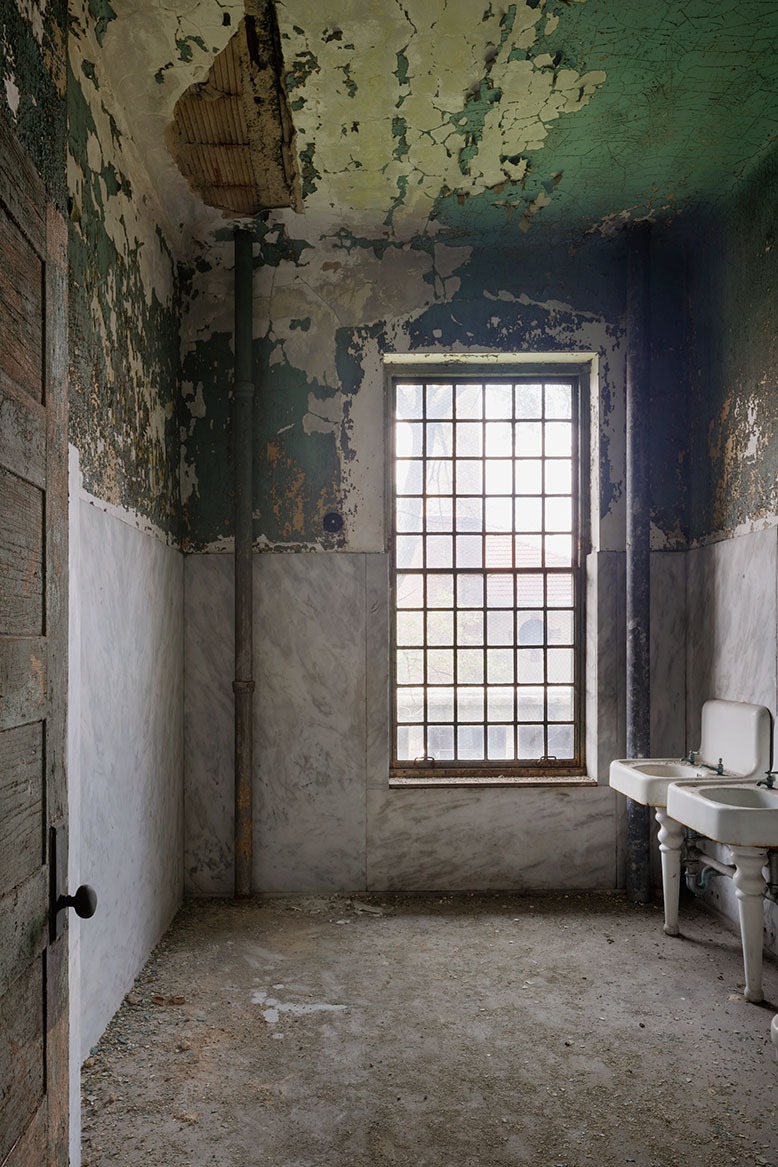
Ironically, the woeful condition of the abandoned buildings is a draw for visitors, evoking emotions “you don’t get in a museum when everything is clean and pure,” Calella says. Photo: Colin Miller
PASSING THE EXAM
The hospital complex was a remarkable, well-oiled machine, designed to provide the manpower to fuel the factories of the nascent industrial revolution and inspire immigrants to write home and convince others to come to America.
Only third-class and steerage passengers were treated on Ellis Island; the upper classes hired their own physicians. On arrival, they received a six-minute medical exam after walking up a flight of stairs; those with suspected ailments were marked in one of 17 different color-coded chalks and given more extensive exams as needed. They were then sent through the passageway from the Great Hall to the hospital complex, which forks to separate those suspected of “loathsome or contagious diseases” from those with other ailments. Many had contracted measles, tuberculosis and the flu in the crowded lower levels of the ocean liners. Some had never seen a doctor before.
The quickest way to get deported was to show signs of mental illness, a limp or other disability. These conditions raised doubts about an immigrant’s ability to support themselves. Even these immigrants, though, were given a chance to prove that a family member would support them. Otherwise, those with serious, incurable diseases were sent back home. The most common diseases stabilized or cured on Ellis Island were tuberculosis, diphtheria, trachoma (a disease of the eyelid) and favus (an infection of the hair follicles).
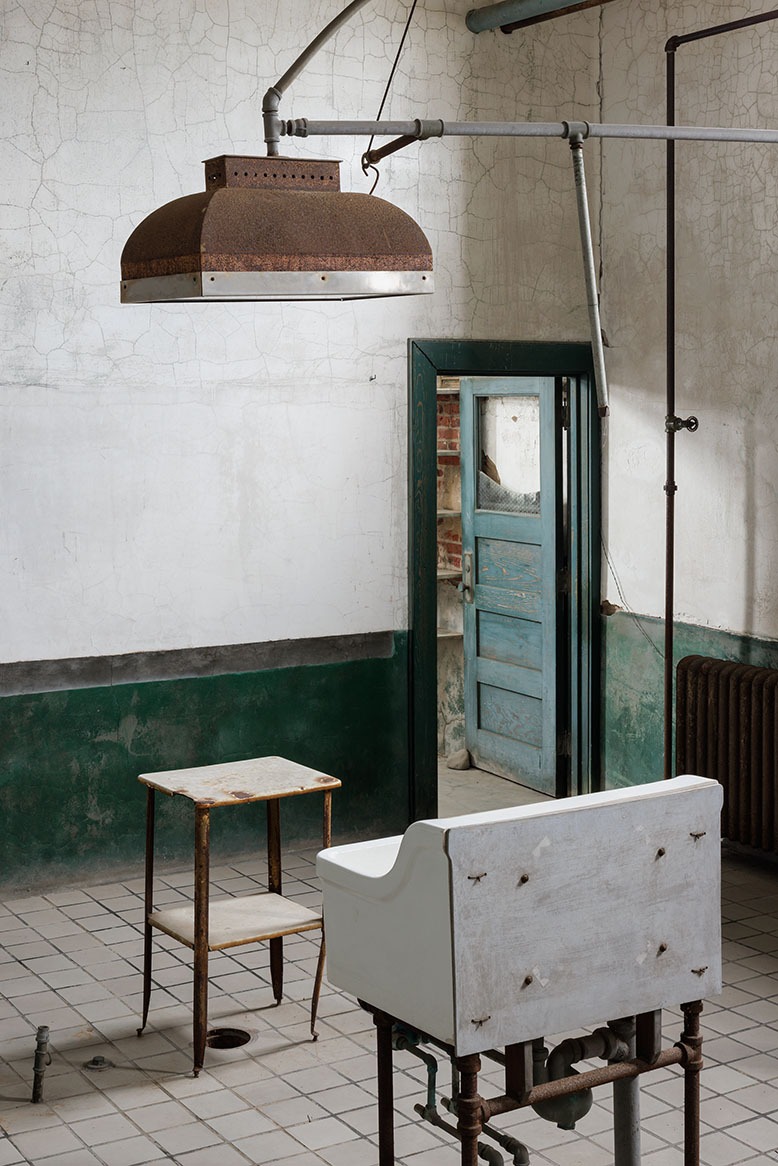
Visitors on the Hard Hat tour get a peek into what was formerly a state-of-the-art medical facility. Photo: Colin Miller
Though the medical complex saw much pain and heartbreak, overall, immigrants were treated well, Calella says. Only 1 percent were sent home for medical reasons, and only 3,500 died there. Some 350 babies were born on the island.
The popularity of the Hard Hat tours, which depart the visitor center six times a day, 363 days a year, goes beyond a fascination with history. Ironically, their woeful condition is a draw, evoking emotions “you don’t get in a museum when everything is clean and pure,” Calella says. Through grimy, cracked windows, participants see the same inspiring view of the Statue of Liberty as the new immigrants, many of whom arrived penniless, petrified, and unable to speak the language.
“The walls tell a story, and as you walk through, you hear whispers and your imagination goes wild,” she says. “I’ve seen grown men cry and kids go 90 minutes without once looking at their phones.”
DISTRESSED BEAUTY
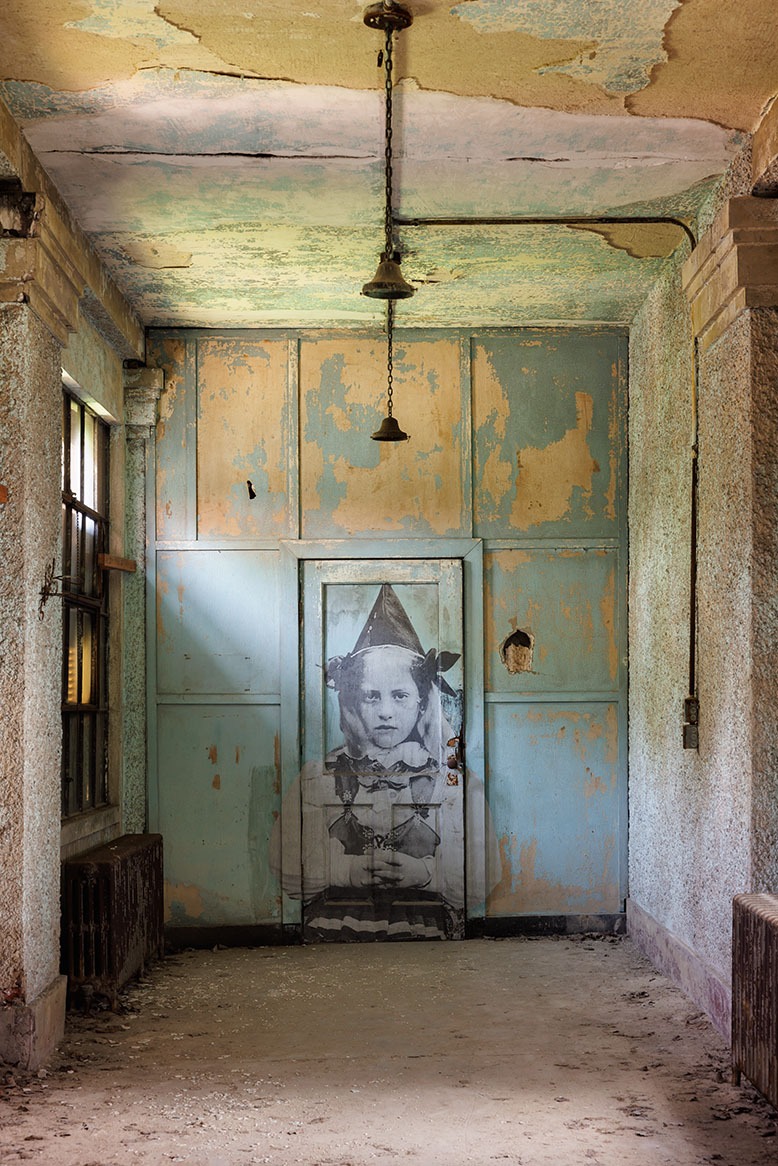
A photo mounted on the back of a door by artist JR depicts a Swedish girl in native dress, the way she arrived on Ellis Island. Photo: Colin Miller
Adding to the haunting atmosphere on Hard Hat tours is an exhibit of enlarged vintage photographs mounted on the buildings’ cracked windows and walls of peeling paint. In the exhibit by French artist JR, titled Unframed, Ellis Island, which was completed in 2014, the somber faces of bearded men in dark coats, women in long dresses and kerchiefs, and children with bandaged heads stare, ghostlike, from deep in the past.
The hospital buildings have become a mecca for nurses, doctors and public health officials, some of whom have held sessions there on global medicine. Religious groups come to host prayer circles, and photographers bring groups eager to capture the classic, distressed architecture framed by harbor vistas.
When he arrived on Ellis Island, JR became “obsessed” with the raw beauty of the abandoned hospital buildings, learning the details of each room and corridor and the stories of the immigrants treated there, Calella writes in the forward of The Ghosts of Ellis Island, a book about JR’s art project.
JR says, “I can feel the history and also the meaning of such a place, and also the fact that we’re lucky to be able to see it today. We don’t know if we’ll see it tomorrow. I want to protect it as much as possible.”
No one knows New Jersey like we do. Sign up for one of our free newsletters here. Want a print magazine mailed to you? Purchase an issue from our online store.
